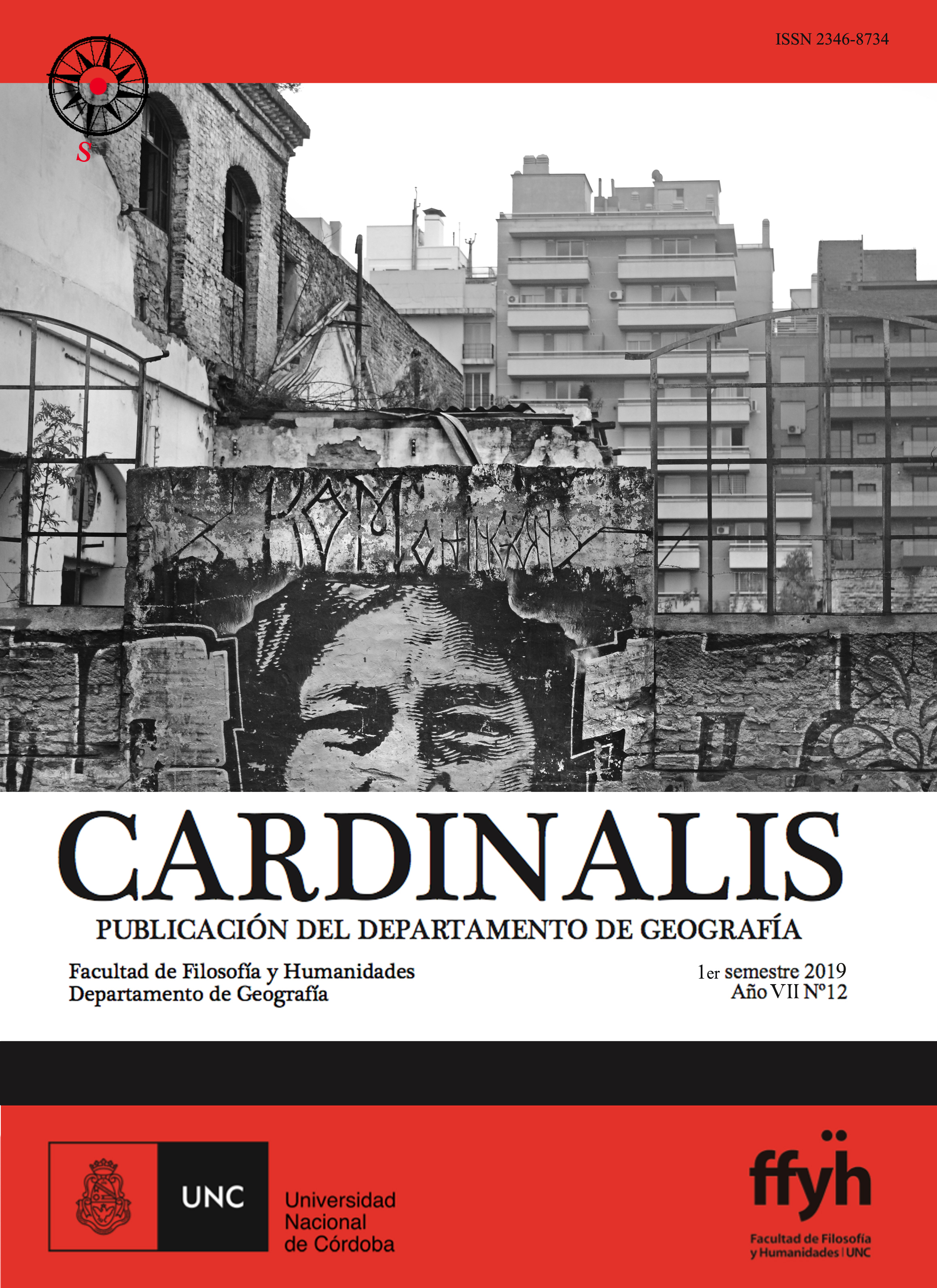La población longeva en los países de América Latina
Palabras clave:
longevidad, sobreenvejecimiento, vida media, América LatinaResumen
Según la teoría de la transición demográfica existe un proceso a escala mundial, que en primer lugar disminuye la mortalidad en la niñez, permitiendo que la mayoría de los niños sobreviva el tiempo necesario para concebir hijos y ejercer su cuidado, con la ayuda de mayor presencia de personas de la familia que sobreviven hasta edades más avanzadas, generándose un circulo virtuoso de eficiencia del mantenimiento de las poblaciones, siendo el envejecimiento demográfico un resultado de este proceso. No obstante los datos empíricos a nivel de países y regiones distan de la supuesta homogeneidad respecto al comportamiento de las probabilidades de sobrevivencia en cada una de las etapas del ciclo de vida. Este artículo de carácter exploratorio tiene como objeto de estudio a los adultos mayores, especialmente analizar el comportamiento del peso relativo de determinados grupos de edades a su interior –octogenarios, nonagenarios, centenarios y supercentenarios–, entre los países de América Latina, en el marco de las evidentes transformaciones en la longevidad a nivel mundial. Destacándose América Latina por el crecimiento más elevado de la población longeva con relación a las diferentes regiones del mundo durante los últimos sesenta años.Descargas
Referencias
AGUAYO, E., y LAMELAS, N. (2006). Factores determinantes de la esperanza de vida en los países del Mercosur, 1970-2000. AEEADE. ARANGO, J. La Teoría de la Transición Demográfica y la experiencia histórica. Revista Española de Investigaciones Sociológicas, n. 10, p.169-198. 1980. BARRO, R. y SALA-i-MARTIN, X.(1995). “Economic Growth”. McGraw-Hill, Inc. U.S.A.
BAUMAN, Z. (2003), Modernidad líquida, Buenos Aires, Fondo de Cultura Económica.
BERNSTEIN AM, WILLCOX BJ, TAMAKI H, KUNISHIMA N, et al. (2004) “Autopsy of an Okinawan-Japanese centenarian: absence of many diseases”. age-related Journals of Gerontology Series A: Biological Sciences and Medical Sciences 59 (11): 1195-9.
BEZRUKOV, V., y FOIGT, N. A. (2005). Longevidad centenaria en Europa. Revista Española de Geriatría y Gerontología, 40(5), 300-309.
BIRREN JE, BUTLER RN, COTMAN CW et al. (2001) Achieving and maintaining cognitive vitality with aging. Institute for the Study of Aging and the International Longevity Center, New York.
BLACONÁ, M. T., y ANDREOZZI, L. (2016). Comparación de la mortalidad y la esperanza de vida de argentina y la ciudad de buenos aires.
BUCKLEY, BM (2001). Healthy ageing: ageing safely. Eur Heart ;3 Suppl N:N3- 5.
CALVERT, J. F., HOLLANDER-RODRIGUEZ, J., KAYE, J., y LEAHY M. (2006). Dementiafree survival among centenarians: an evidence-based review. Journals Gerontol Ser A Biol Sci Med Sci; 61 (9): 951-956.
CARRASCOSA, L. L. (2005). Consecuencias del envejecimiento de la población: el futuro de las pensiones.
CASTELLÓ-CLIMENT, A. y DOMÉNECH, R.(2002). “Human Capital Inequality, Life Expectancy and Economic Growth”, en htp://iei.uv.es
CAWTHON, RM et al (2001). Characterization of Participants in Studies of Exceptional Survival in Humans: Recommendations for a Minimum Set of Measures.
CENSUS BUREAU (1999). Centenarians in The United States. Krach CA. International Programs Center. U.S. Department of Health and Human Services. National Institutes of Health. National Institute on Aging. U.S. Department of Commerce Economics and Statistics Administration. U.S.
CEPDE, ONE (2008). El envejecimiento de la población cubana. Cuba y sus territorios, 2007. Centro de Estudios de Población y Desarrollo, Oficina Nacional de Estadísticas, Cuba, p. 31.
CEPAL (2006). Manual sobre indicadores de calidad de vida en la vejez. Santiago de Chile: Centro Latinoamericano y Caribeño de Demografía.
CEPAL/CELADE (1993). Población, equidad y transformación productiva., Santiago: CEPAL/CELADE.
CHRISTENSON, B. y JOHNSON, N.(1995). “Educational Inequality in Adult Mortality: An Assessment with Death Certificate Data from Michigan”. Demography. Vol. 32. No 2, pp. 215-229.
CLIQUET, R. L. (1991). The Second Demographic Transition: Fact or Fiction? Population Studies 23. Strasbourg: Council of Europe.
COLEMAN, D. (2004), “Why we don’t have to believe without doubting in the ‘Second Demographic Transition’: some agnostic comments”, Vienna Yearbook of Population Research, vol. 2, N° 1, Viena, Instituto de Demografía de Viena
CORBINOS, L. A. (2001). Envejecimiento en América latina y el Caribe: hechos sociodemográficos y reflexiones éticas. Acta bioethica, 7(1).
CÓRDOBA CASTILLO, Victoria, M.Sc. y PINAZO-HERNANDIS, Sacramento, Ph (2016). Una revisión de la investigación en centenarios: factores psicosociales en la extrema longevidad. Revista Búsqueda. Número 16: 64-80.
DÁMASO CRESPO, S. (2006). El Envejecimiento Defeniciones Y Teorías. In D. C. Santiago, Biogerontología (pp. 13-34). Sanatander: Universidad de Cantabria.
DEL POPOLO, F. (2000). Los problemas en la declaración de la edad de la población adulta mayor en los censos. CEPAL.
DÍAZ FRANULIC, C. (2017). Migración internacional, envejecimiento poblacional y segunda transición demográfica, ¿hacia dónde va Chile?. Notas de Población.
EHRLICH, I. y LUI, F.(1991). “Intergenerational Trade, Longevity, Intrafamily Transfers and Economic Growth”. Journal of Political Economy. Vol. 99. no 5, pp.1029-1059.
FLÓREZ-LOZANO, J. A. (2006). Optimismo y salud. Jano, 1616, 59-61.
FRANCESCHI, C y BONAF, M (2003). Centenarians as a model for healthy aging. Biochemical Society
GARCÍA GONZÁLEZ, J. M. (2015). La transformación de la longevidad en España de 1910 a 2009. Madrid: Centro de Investigaciones Sociológicas.
GAVRILOV L, GAVRILOVA N, OLSHANSKY J y CARNES A (2002). Genealogical data and biodemography of human longevity. Soc. Biol, 2002; 49:120-33.
GONZÁLEZ MORO, Alina Mari y RODRÍGUEZ RIVERA, Liliam (2006). Centenarios y Discapacidad. GEROINFO. RNPS. 2110. Vol. 1 No. 4.
GONZÁLEZ, L. M., y PERANOVICH CELTON A. (2012). Años de esperanza de vida perdidos en Argentina, 2001-2010. Población y Salud en Mesoamérica; 10.
GROSSMAN, M. y KAESTNER, R. (1997). “Effects of Education and Health” en BEHRMAN, J. y STACEY, N. Eds. “The Social Benefits of Education”. Ann Arbor, University of Michigan Press.
INGLEHART, R. (1997), Modernization and Postmodernization. Cultural, Economic, and Political Change in 43 Societies, Princeton, Princeton University Press.
JEUNE B, W. y VAUPEL, J. (1995). Exception Longevity:From Prehistory to the Present. Odense University Press.
JONES, M. (2014). Longevidad y cambios en la periodicidad de la vida adulta. In VIII Jornadas de Sociología de la UNLP (La Plata, 2014).
KABIR, M. (2008). “Determinants of Life in developing Countries”. The journal of Developing areas. No. 41. Pp: 185-204.
KALEMLI-OZCAN, S.; RYDER, H. y WEIL, D.(2000). “Mortality Decline, Human Capital Investment, and Economic Growth”. Journal of Development Economics. No 62. Pp.1-23.
LESTHAEGHE, Ron (1995). “The Second Demographic Transition in Western Countries: An Interpretation”. In: Mason, K. O. and Jensen, A. M. (eds.). Gender and Family Change in Industrialized Countries. New York: Oxford University Press.
LESTHAEGHE, Ron y VAN de KAA, D. J. van de (1986). “Twee Demografische Transities?”. In: Kaa, D. J. van de and Lesthaeghe, R. (eds.). Bevolking: Groei en Krimp. Deventer: Van Loghum Slaterus.
LLERAS-MUNEY, A. (2002). “The Relationship Between Education and Adult Mortality in the United States”. NBER Working Paper 8986. National Bureau of Economic Research.
MANZANO, Fernando y VELAZQUEZ, Guillermo (2016). Estructura ocupacional argentina. ¿Qué ocultan los promedios? Análisis según regiones y escala urbana. Año 2010. Papeles de geografía, Murcia, n. 62.
MARCO-GRACIA, F. (2018). La génesis de la Segunda Transición Demográfica en el Aragón rural (1970-2012). Reis, (161), 63-86.
OEPPEN, J., y VAUPEL JW. (2002). Broken limits to life expectancy. Science (80);296(5570):1029-1031
ORGANIZACIÓN MUNDIAL DEL TRABAJO (2009).La igualdad de género como eje del trabajo decente- 268 páginas.
OMRAM A. (1971). The Epidemiologic Transition: A Theory of the Epidemiology of Population Change. Milbank Mem Fund Q.; 49 (4): 509-538.
PARKER CJ, MORGAN K, y DUVEY ME (1997). Physical illness and disability among elderly people in England and Wales: the Medical Research Council Cognitive function and Ageing Study. The analysis Group. J Epidemiol Community Health.; 51(5):494- 501.
PARTRIDGE, L. y GEMS D. (2002). The evolution of longevity. Curr. Biol. 12, R544-46.
PASQUALINI, CD. (2014). Vivir envejece. Medicina (B. Aires) Vol.74 no.6 Ciudad Autónoma de Buenos Aires
PATARRA NL. (1973). Transición Demográfica : ¿Resumen histórico o teoría de población ? Demogr Econ.; 7(1): 86-95.
PÉREZ DÍAZ, J. (2002): La madurez de masas, IMSERSO, M.o de Trabajo y Asuntos Sociales, Madrid.
PERLS TT, BOCHEN K, FREEMAN M, ALPERT L, SILVER MH. (1999) “The New England Centenarian Study: validity of reported age and prevalence of centenarians in an eight town sample”. Age and Ageing 28(2):193-197.
PERLS TT, WILMOTH J, LEVENSON R, DRINKWATER M, COHEN M, Bogan H, JOYCE E, BREWSTER S, KUNKEL L, PUCA A. (2002) “Life-Long Sustained Mortality Advantage Of Siblings Of Centenarians”. Proceedings of the National Academy of Sciences; 99: 8442-8447.
PUGA, M.D. (2010). Cien años y más. Las claves de una longevidad exitosa. Centro de Ciencias Humanas y Sociales (CCHS) y Consejo Superior de Investigaciones Científicas (CSIC). Recuperado de http://www.imserso.es/InterPresent2/groups/imserso/.../ idi56_07longevidad.pdf
PUGA, M. D., PUJOL, R., y ABELLÁN, A. (2014). Evolución y diferencias territoriales de la esperanza de vida libre de discapacidad a los 65 años en España. XIV Congreso Nacional de la Población. Sevilla: AGE.
PUJOL RODRÍGUEZ, Rogelio; ABELLÁN GARCÍA, Antonio; PÉREZ DÍAZ, Julio y FARIÑAS, Diego (2014). La medición del envejecimiento. Informes Envejecimiento en red, n. 9.
RICA, N. C. C. S. C. (1985). Duración de la vida: capítulos seleccionados del libro de Dublin, Lotka y Spiegelman Length of Life.
ROBINE, J.M. y VAUPEL, J. (2000). Emergence of supercentenarians in low mortality countries.
ROBINE, J-M., y VAUPEL, J.W. (2001). Supercentenarians: slower ageing individuals or senile elderly? Experimental Gerontology 36: 915-30.
ROBINE, J. M., SAITO, Y., y JAGGER C. (2009). The relationship between longevity and healthy life expectancy. Qual Ageing Older Adults.; 10 (2):5-14.
ROBINE, J.M., PACCAUD, F. (2005) “Nonagenarians and centenarians in Switzerland, 1860-2001: a demographic analysis”, Journal of Epidemiology and Community Health 59: 31-37 ROTT C, d'HEUREUSE V, KLIEGEL M, SCHÖNEMANN P, BECKER G. (2001) “Heidelberg Centenarian research Study: of theoretical the oldest and old” methodological Zeitschriftfür principles Gerontologie for und social scienceGeriatrie,34(5): 356-64.
RUIZ TORRES, A. (2009). El mito de la longevidad ilimitada. Cap Uno. Instituto de Mayores y Servicios Sociales–IMSERSO–Nuevas Miradas sobre el envejecimiento. Madrid. Ministerio de Sanidad y Política Social SAMUELSSON, S.M.; Bauer, B.; HAGBERG, B.; SAMUEKSSON, G.; NORDBECK, B.; BRUN, A.; GUSTAFSON, L.; cohorts the at RISBERG, age J. of (1997): 100” “A multidisciplinary International Journal study of of Aging five consecutive and Human Development, vol. 45(3), pp.: 223-253.
SCHOFIELD R, REHER D, BIDEAU A. (1991). Decline of mortality in Europe. http://www.oup.co.uk/isbn/0–19–828328–8
SOMOZA, J. L. (1971). Algunos efectos sociales y económicos derivados de la baja de la mortalidad en la República Argentina entre 1900 y 1960. Desarrollo Económico, 113-123.
STEFFENSEN, J.F. (1930). Some Recent Researches in the Theory of Statistics and Actuarial Science, Cambridge University Press, Londres.
THATCHER, A.R., KANNISTO, V., y VAUPEL, J.W (1998). The Force of Mortality at Ages 80 to 120. Odense: Odense University Press.
TORRADO, S. (1990). Población y desarrollo en la Argentina (en busca de la relación perdida), Buenos Aires: Honorable Camada de Senadores, Comisión de Familia y Minoridad.
UNITED NATIONS (2017). Department of Economic and Social Affairs, Population Division. World Population Prospects: The 2017 Revision, DVD Edition.
URBINA, P. B. (2011). El crecimiento económico y la mejora de las condiciones de vida en Chile/Economic growth and improvement in living conditions in Chile. Revista CIDOB d'afers internacionals, 189-203.
VAILLANT, G. E. y MUKAMAL, K. (2001) “Successful Aging”, American Journal of Psychiatry 158:839-847
VALDEBENITO, C. (2007). Definiendo homo sapiens-sapiens: aproximación antropológica. Acta bioethica, 13(1), 71-78. VAN de KAA, Dirk (1987). “Europe’s Second Demographic Transition”. Population Bulletin, 42(1): 1-59.
VAN DE KAA, D. (2002), “The idea of a second demographic transition in industrialized countries”, documento presentado en el “Sixth Welfare Policy Seminar of the National Institute of Population and Social Security”, Tokio, 29 de enero.
VAN de Walle, E., 1990, “How do we define the health transition”? in J. Caldwell, S. Findley, P. Caldwell, G. Santow, W. Cosford, J. Braid & D. Broers-Freman (eds.), What we know about Health Transition: The cultural, social and behavioural determinants of health, The Australian National University Printing Service, Australia.
VILLA, M. y RIVADENEIRA, L. (2003). El proceso de envejecimiento de la población de América Latina y el caribe: una expresión de la transición demográfica. Eúphoros, (6), 87-122.
WILKINSON, R G (1996). Unhealthy Societies: The Afflictions of Inequality. Londres: Routledge.
WILLCOX, D. C., WILLCOX, B. J., WANG, N. C., He, Q., ROSENBAUM, M., y SUZUKI M. (2008). Life at the extreme limit: phenotypic characteristics of supercentenarians in Okinawa. Journals Gerontol Ser A Biol SciMed Sci.;63 (11):1201-1208
WILLCOX, B. J., WILLCOX, D. C., y FERRUCCI L. (2008). Secrets of healthy aging and longevity from exceptional survivors around the globe: lessons from octogenarians to supercentenarians. Journals Gerontol Ser A Biol Sci Med Sci.;63 (11)(1181-1185).
Descargas
Publicado
Número
Sección
Licencia
Aquellos autores/as que tengan publicaciones con esta revista, aceptan los términos siguientes:- Los autores/as conservarán sus derechos de autor y garantizarán a la revista el derecho de primera publicación de su obra, el cuál estará simultáneamente sujeto a la Licencia de reconocimiento de Creative Commons (indicada abajo) que permite a terceros compartir la obra siempre que se indique su autor y su primera publicación esta revista.
- Los autores/as podrán adoptar otros acuerdos de licencia no exclusiva de distribución de la versión de la obra publicada (p. ej.: depositarla en un archivo telemático institucional o publicarla en un volumen monográfico) siempre que se indique la publicación inicial en esta revista.
- Se permite y recomienda a los autores/as difundir su obra a través de Internet (p. ej.: en archivos telemáticos institucionales o en su página web) antes y durante el proceso de envío, lo cual puede producir intercambios interesantes y aumentar las citas de la obra publicada. (Véase El efecto del acceso abierto).

Esta obra está bajo una Licencia Creative Commons Atribución-NoComercial-CompartirIgual 4.0 Internacional.






